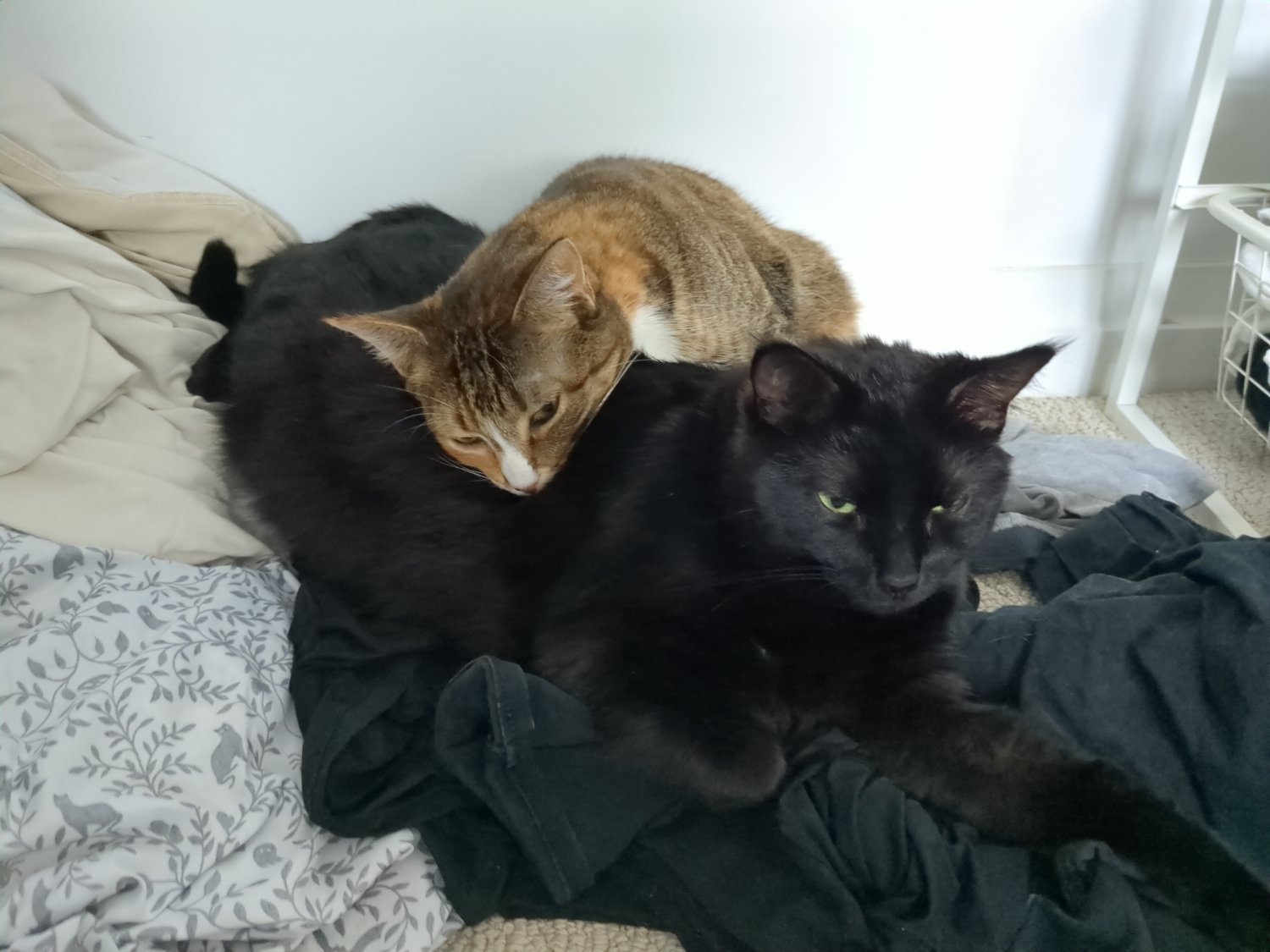Carbon monoxide poisoning when I was like 8 or 9... Just chilling out at a relative's house, then I just blacked out, next thing I knew there was cold air blowing at my face and I was outdoors. I've experienced other terrible things but this is probably the closest "near death" experience I have so...
zlatiah
Frankly I agree. From my personal experience, every single native Chicagoan has been calling that particular building "Sears Tower". Even though the name has been officially changed for more than 15 years by this point...
And I thin OSM actually handled this quite well! The original Sears Tower name is still available as an "alt_name" tag on OSM as well, I just double-checked and yep it's still searchable on the map
I don't think this is good advice by any means, but I dropped my previous car at a car dealership for $500. They only were able to give me $500 because 1) it was an ex-police car and they apparently couldn't sell it under normal circumstances, and 2) the car was pretty beaten up and probably have to be scrapped for parts.
This information is 2-3 years old so maybe things have changed... but back then I believe car dealerships would be willing to take a car for at least $500, since they can probably make a profit by auctioning the car or scrapping it for parts that way. So if I really just want to get rid of something, it's not a bad option. However, most second-hand cars are worth way more than that, especially if I'm willing to put in a bit of effort, so... take this information as you will. I agree with the other comments that a used car can go for much higher if I'm willing to try.
The thing that annoys me is... even if they genuinely want to save money (and that's a big if), this is barely even "saving" much money. NIH has historically been a very good return on investment for the US government despite running on a shoestring budget, and that is probably not even accounting for the various downstream applications (like all the pharma industry) that relies on NIH-funded research.
Part of the issue with indirect costs are due to the NIH never getting much of a budget raise and the ballooning bureaucracy... Yes, there are people wanting change for the better, but the current administration decided to wake up to violence by dealing with this in the worst way possible
Interesting... A coworker of mine previously worked on a fintech project that needed to use open models. Apparently their team found the Llama models to be much better than anything Mistral had at the time... I'm hoping Mistral's new model (the one featured in the news article) is better. Not sure if Le Chat is open weights like the Mistral/Mixtral lines though...
Considering how powerful the US has in terms of geographical advantage and military prowess, I'd be horrified if any entity is capable of staging a coup in the US... Maaaybe if a few countries somehow convince Canada/Mexico to all work together. But all-things considered it certainly seems like a self-coup is much more likely for the US
I was somewhat scared of driving after dark because it always felt like there's a ghost watching me from the backseats...
(Used to live at a place where you have to drive to even get groceries)
I... kinda fit the bill. Most proud moment was getting the highest grade in my class for Organic Chemistry (believe it was 107/100 or something... we had extra credits since the course was too damn hard) while barely studying, because the chemical structures/concepts made natural sense to me and I kinda liked the class
Used to think I'm really smart. Later on I realize I probably have hyperlexia from my ASD diagnosis so... I still studied, just that it seemed to have taken much less time for me than most others
- What led to the Haymarket Massacre, which might have been the main catalyst behind the 8-hour workday... So I cannot hate it out of principle
- Seems reasonable but I don't know how to actually implement it
- For some reason is more associated with Anarcho-Capitalism rather than the other variants, which I thought was... Interesting
This is more related to why there's no legal pathways rather than "why deport", but I could think of a few reasons that make it difficult to improve legal immigration:
- Bureaucracy in some countries (notable example being the US) makes it slow/difficult to pass new laws
- Since immigrants (legal or not) can't vote, laws regarding improving immigration pathways aren't usually popular among the voter base
- There isn't a country in the world that has figured out how to "solve" the immigration problem, so there isn't even a good reference point
- There is a global rise in right-wing and sometimes far-right sentiment, which are often targeted at reducing immigration, which makes improving immigration pathways even less politically appealing
I guess if legal immigration isn't really an option then deporting someone might just seem like the "natural", lawfully correct thing to do. I don't exactly agree with this but I think that might be what's happening
Disclaimer: not a professional investor, trader, or finance researcher. I literally just have a mix of US and international index funds and bonds.
These are just my personal opinions and I probably don't know more than OP... My view of the stock market, especially with short-term changes is... I don't assume anything to make rational sense, or that the market could really be quite stupid.
Maybe my view was influenced by A Random Walk Down Wall Street... but my main consideration was below:
- So-called "meme stocks" and hype cycles have existed for hundreds of years, much longer before the current LLM hype and the previous crypto hype
- There is a somewhat "successful" strategy of buying a stock to sell it to the next sucker, which would be very prone to the entire thing collapsing
Especially considering that LLM is the current hype (and the hype cycle might be ending), I... imagine just about anything could happen.
More specifically regarding Nvidia though, I mean they've already made their fair share of money because their technology was used for both crypto and LLMs so... They already won anyway, so who's really hurt from their stock dropping a bit?




Thanks! You put this better than I could. I was thinking that this has to be something philosophers have figured out or at least seriously investigated... I will look into these concepts
IMO this is the asklemmy community and I came here asking for opinions so... I think your opinion is quite valid